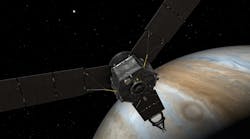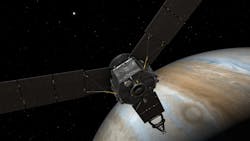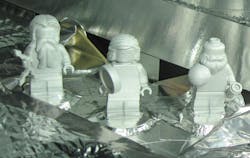Engineers and scientists at NASA will be spending some tense time at NASA’s mission control as the four-ton spacecraft Juno ends its five-year, 1.74 billion-mile journey to Jupiter, the solar system’s largest planet. It will swoop in on Jupiter at 150,000 mph, making it one of the fastest man-made objects ever, and begin circling the gas giant for 107 days as it settles into its final orbital. It will stay in its orbit for about 20 months, circling the planet every 14 days and coming to within 2,600 miles of the planet’s cloud tops.
Juno is scheduled to “arrive” at Jupiter on the evening of July 4th, and I’m hoping some of the networks cover it like they once covered Gemini and Apollo missions. After all, NASA even put a video camera on the Juno, and one of its main missions is public relations, sending back never-before-seen images of Jupiter.
Here’s some Juno trivia to get you psyched up for this weekend’s Jovian fireworks:
Who’s onboard? Nobody alive, that’s for sure—at least not human. But the spacecraft has been carrying three Lego figurines crafted out of space-grade aluminum to represent the Roman god Jupiter (Zeus to the Greeks), his wife Juno, and the Italian scientist Galileo Galilei (who made several discoveries about Jupiter, including four of its moons). Galileo is depicted with a telescope, the tool he used to make his astronomical discoveries. Jupiter holds his customary lightning bolts, while Juno has a magnifying glass (signifying the goddess’ search for truth).The distance between the Earth and Jupiter will also slow down communications between NASA and its spacecraft. Radio transmissions travelling at the speed of light will take at least 48 minutes to make the trip from Juno to NASA.
Good luck, NASA. I’ll be watching.
Looking for parts? Go to SourceESB.




